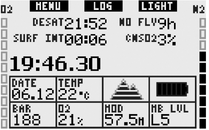- Messages
- 21,503
- Reaction score
- 21,775
- Location
- Philadelphia and Boynton Beach
- # of dives
- 2500 - 4999
Shearwaters are the exception to the difficult user interface rule. Have you used one of the typical 4 button watch style computers? Stupid complicated. Why do I need to do short AND long AND combination presses? There are FOUR buttons! One button computers were easier to adjust! Sorry rant over...
Yes, the Teric is a 4 button, watch style computer. It is extremely easy to navigate and program. It has the look forward NDL planner brought up by @SpecialTest
I still have my Oceanic Geo 2, my son uses it for backup now. I always found it simple to use, don't know why some folks found it difficult. No short and long or combination button presses




